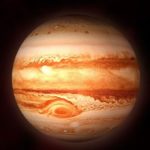Interesting facts about the stars
 There is an opinion that the stars are the basis of life in the universe. In part, this theory can be considered confirmed, because there is at least one star, without which life would not exist. This is our Sun, which from the surface of the Earth seems such a warm yellow ball …
There is an opinion that the stars are the basis of life in the universe. In part, this theory can be considered confirmed, because there is at least one star, without which life would not exist. This is our Sun, which from the surface of the Earth seems such a warm yellow ball …
In the observable universe, double stars are larger than single stars. There are also triple ones.
The most “numerous” known star system consists of six stars.
The density of a neutron star is comparable to the density of an atomic nucleus.
The radius of neutron stars rarely exceeds 50 kilometers, and usually is no more than 15-20 kilometers, however, their mass in this case is comparable to the mass of the Sun.
Pulsars – a special type of neutron stars, rotating around its axis at a speed of five hundred to seven hundred revolutions per second.
The coldest stars are the so-called brown dwarfs. If the planet Jupiter was massive, it could well become such a star.
The bigger the star, the shorter the life span.
The hottest of the famous stars is the Pistol Star. It is so hot that only its monstrous gravity allows it to keep its shape.
The pistol star shines ten billion times more powerful than the Sun.
The largest number of stars in the observable universe are red dwarfs.
Red dwarfs are long-lived stars, their lifespan can be up to ten trillion years.
The coldest stars are red, the hottest are blue.
The largest known star is the VY of the Great Dog, it is 1800 times larger than the Sun.
If Mercury (see interesting facts about Mercury) were turning around a hotter star, it might well have evaporated.
The Star This Kiel is the heaviest of the known stars, its mass is about 150 solar, and it emits four million times more energy than the Sun.
The nearest star is Proxima Centauri, before it is 4.2 light years.
White dwarf – the final stage of life of small stars like our Sun. Black hole – the final stage of the life of stars is much more massive.
The sun makes a turn around the center of the Galaxy for two hundred million years.



























